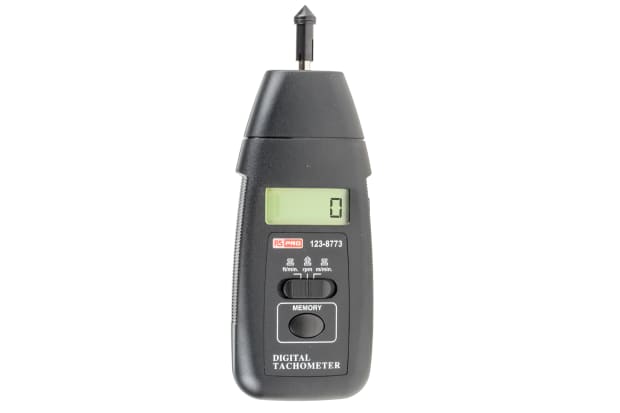Unlocking the Tricks of Tachometers: Whatever You Required to Know About This Important Tool in Your Lorry
Recognizing the details of tachometers can supply useful understandings right into your car's efficiency and maintenance demands. From gauging engine rate to deciphering the information it provides, tachometers serve as a crucial device for automobile owners and fanatics alike. By unwinding the secrets behind this essential tool, you can unlock a wealth of info that can enhance your driving experience and make certain the durability of your vehicle.
Relevance of Tachometers
The relevance of tachometers lies in their capacity to offer crucial real-time information about an engine's rotational rate, allowing for specific monitoring and upkeep of machinery. By gauging the revolutions per min (RPM) of an engine's crankshaft, tachometers offer useful insights right into the engine's efficiency - tachometer. This data is crucial for guaranteeing that the engine runs within its ideal array, preventing possible damage from over-revving or underperforming
Tachometers play an important duty in helping drivers and technicians discover any kind of anomalies in the engine's speed, which can indicate problems such as gas inadequacy, mechanical problems, or extreme pressure on the engine. By promptly determining these concerns via tachometer readings, maintenance can be done proactively, protecting against costly repair services and downtime in the lengthy run.
Furthermore, tachometers are especially vital in high-performance lorries and machinery, where accurate control over engine speed is needed for ideal procedure. Competing cars, aircraft, and industrial equipment depend on tachometers to provide peak performance while preserving security requirements. Essentially, tachometers are not simply tools for determining rate however vital devices for making certain the smooth and reliable procedure of engines throughout different applications.
Exactly How Tachometers Procedure Engine Rate
Using sensors that detect the regularity of electrical pulses created by the engine's ignition system, tachometers precisely measure the rotational rate of an engine. By keeping an eye on the rate at which these pulses are obtained, tachometers offer real-time responses on exactly how fast the engine's crankshaft is revolving per minute, generally referred to as changes per minute (RPM)
The tachometer's sensing unit, typically connected to the engine's ignition coil or stimulate plug wires, chooses up the electrical signals created each time a cylinder fires. These signals are then exchanged RPM analyses displayed on the scale or tool cluster within the vehicle driver's view. Tachometers can be analog or electronic, with modern automobiles commonly featuring electronic displays for exact and instantaneous RPM readings.
This details is essential for vehicle drivers to understand the engine's performance, protect against over-revving, optimize gear changing, and ensure effective gas consumption. By accurately determining engine rate, tachometers play a vital function in assisting vehicle drivers operate their cars securely and efficiently.
Translating Tachometer Analyses
Having a clear understanding of just how tachometers measure engine speed sets the structure for properly interpreting the RPM readings displayed. Translating tachometer readings is important for ideal lorry efficiency and engine wellness. RPM (Revolutions Per Minute) readings on the tachometer indicate the speed at which the engine's crankshaft is rotating. When the engine is idling, the tachometer needle normally relaxes around 600-1000 RPM, relying on the automobile. As you increase, the RPM will certainly raise, mirroring the engine's Full Report greater rotational rate. When changing equipments in a hand-operated transmission vehicle, the RPM will certainly go down as you involve the clutch and adjustment equipments, after that climb once more as you increase in the brand-new equipment. Checking the tachometer can aid you establish one of the most reliable moving indicate make best use of gas economic climate and engine power. Furthermore, unusual changes or regularly high RPM readings can show prospective problems with the engine that may call for specialist interest. By focusing on the tachometer readings and recognizing just how to see this page translate them, you can ensure your lorry runs smoothly and efficiently.


Tips for Using Tachometers Properly
To enhance driving performance and optimize engine efficiency, what key approaches can be executed for properly using tachometers? Tachometers are critical tools that give real-time feedback on engine rate, making it possible for chauffeurs to make enlightened decisions for much better efficiency - tachometer. Here are some ideas for using tachometers successfully:
Recognizing Optimal RPM Variety: Acquaint yourself with the ideal RPM (Changes Per Min) range for your automobile. This array varies between various autos and is typically suggested in the proprietor's guidebook. Keeping the engine within this range can enhance gas performance and prolong the engine's lifespan.
Moving Equipments at the Correct Time: Make use of the tachometer to establish the very best time to change gears. Upshifting prematurely or too late can result in decreased efficiency and performance. Aim to shift gears when the RPM reaches the optimal array for the following equipment.
Keeping An Eye On Engine Anxiety: High RPMs for extended periods can strain the engine. Watch on the tachometer to avoid over-revving, specifically throughout acceleration or when carrying hefty lots.
Tachometers and Automobile Maintenance
When thinking about vehicle maintenance, tachometers play a critical duty in keeping an eye on engine performance and spotting potential concerns. Tachometers supply vital data on engine rate, enabling chauffeurs and mechanics to make certain that the engine is operating within the recommended RPM array. On a regular basis keeping track of the tachometer readings can assist identify troubles such as engine misfires, worn-out ignition system, or concerns web link with the fuel distribution system. By taking note of the tachometer, drivers can protect against extreme pressure on the engine, which can cause costly repair services down the line.
Along with finding potential problems, tachometers can additionally aid in enhancing gas efficiency. By keeping the engine speed within the optimum array, vehicle drivers can boost their gas mileage and reduce fuel usage. This not just benefits the motorist's pocketbook but likewise adds to ecological conservation by lowering dangerous exhausts.
Conclusion
